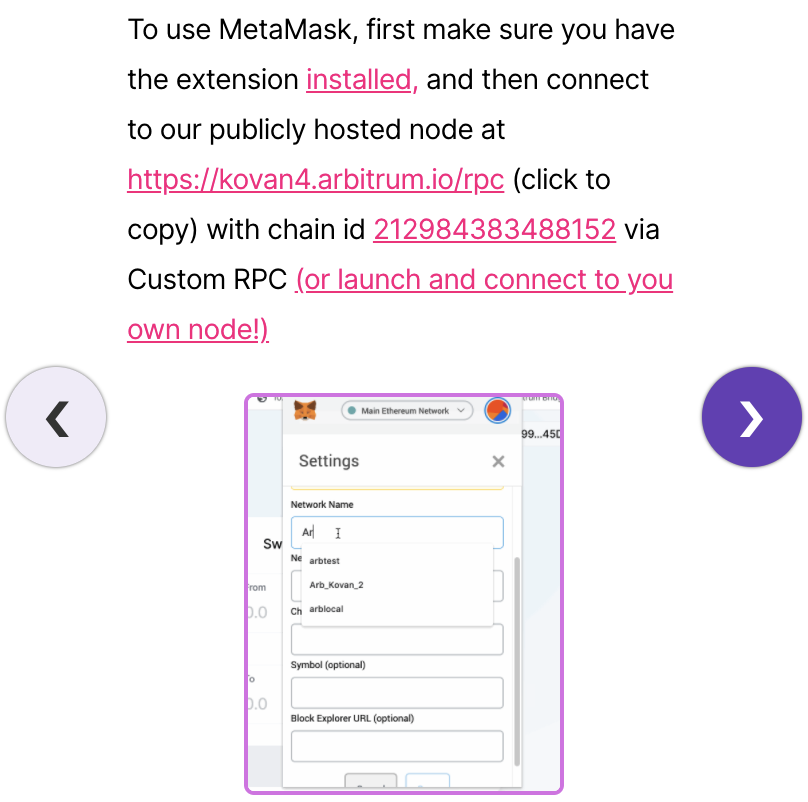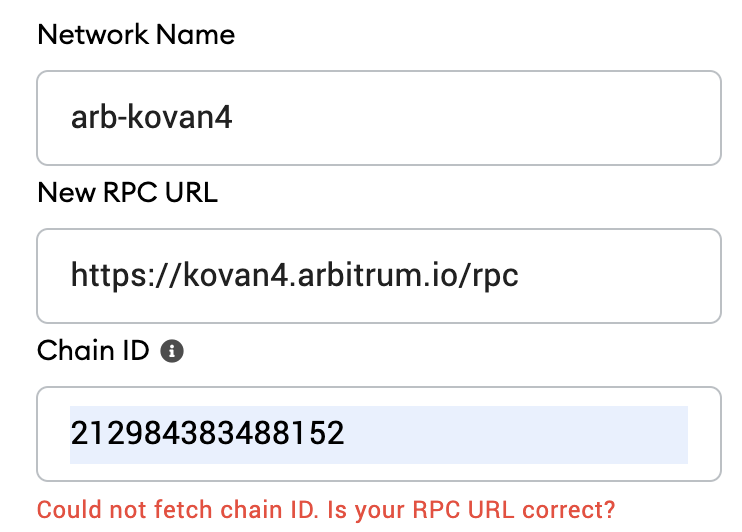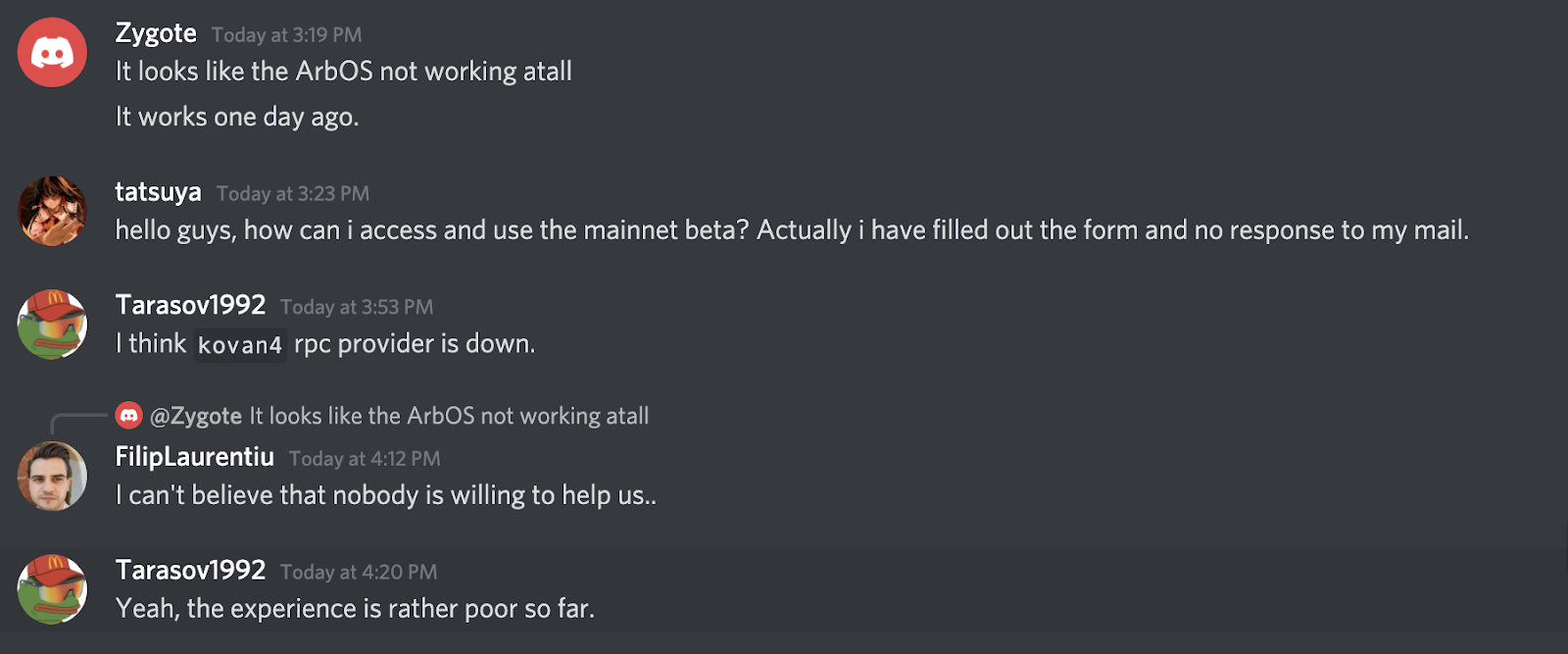Scrutinizing Ethereum’s Arbitrum.

If you’ve been following the news, then you have probably heard about Arbitrum—an Ethereum scaling solution. You might have gotten a mouthful of buzzwords like ‘scalability’ and ‘compatibility,’ but does Arbitrum actually work?
We did some tests to find out.
Recap on Arbitrum
First, let me give you a primer on what Arbitrum. In short, it’s a ‘transaction sequencer.’ It takes users’ transactions and puts them in order.
In the real world, this is similar to using a payment app like Venmo or WeChat. You send money to the app and get a digital balance in return. Then, you can go out and spend that money without incurring a $30 ACH or wire transfer fee each time you spend. The bank doesn’t know what happens on Venmo, all it can do is look at transfers to and from the app.
Arbitrum is similar except that it’s auditable (you can independently verify transactions) and non-custodial (it doesn’t hold your money). You can verify what happened there, and, if things go wrong you can get your money back since it’s locked on Ethereum.
You send money to Arbitrum by locking it on an Ethereum smart-contract called ‘bridge.’ Once the transaction completes, your balance on Arbitrum changes. Now that you have a balance on Arbitrum, you can spend that money without huge fees. To exit, you tell the bridge to release your funds on Ethereum by sending a transaction.
Ethereum can’t verify what happens on Arbitrum so it doesn’t know if the balance you want to withdraw is correct. For verification, Arbitrum regularly submits a summary of what happened to Ethereum and there’s a time window for anybody to make sure everything is correct. That’s called ‘optimistic rollup.’
The State of Arbitrum
Now that you know how Arbitrum works let’s see if it lives up to the hype.
The purpose of Arbitrum is to give Ethereum users fast and cheap transactions with a high level of security.
In my personal opinion, it’s critical that the user experience is on-point. The brilliance of the likes of Metamask and Uniswap is that they made something complex like DeFi easy.
Arbitrum needs to make sure it is seamlessly integrated with Ethereum that it has good user experience to succeed in a meaningful way. (Otherwise, you’ll get a scenario where people only hardcore crypto nerds use the network, like how Lightning is used today on Bitcoin).
Unfortunately, Arbitrum is far from seamless.
Before I continue, Arbitrum had been in development for years and it had been running a testnet for several months. No project is perfect at first, but the least we as crypto geeks should expect is a minimum viable product that is safe and usable—albeit with some expected hiccups.
I went to the project’s official website to test applications. So far, Arbitrum supports Bancor, a fork of Uniswap, and a decentralized exchange with an order book. I started with the fork of Uniswap.
First, the exchange asked me to change the network in my Metamask, which isn’t anything unusual. Metamask can create and send transactions on different networks quite easily by calling different URLs.

However, I couldn’t do it as the URL provided by the app wasn’t working. Metamask couldn’t read the data because the server was unavailable. Hmm, not looking too good so far.

Besides Metamask, the app offered me several ways to connect, including Portis, Fortmatic, and WalletConnect. Of these options, only WalletConnect worked.
The same goes for Bancor. I decided to let the team know about the issue in Discord but received no response—a sign that development in this area isn’t a priority for them. I also noticed that some other people were frustrated by their experiences.

I only managed to get MCDEX, a DEX with an order book, working. However, it was very slow and didn’t display data correctly. It also didn’t provide any instructions on how to bridge assets from Ethereum to Arbitrum.

I wish this was my real net worth on Arbitrum.
To sum it all up, the user experience on Arbitrum is terrible, to put it plainly. The team is probably busy with onboarding new projects onto their mainnet, but the experience I got wasn’t reassuring. If I can’t figure out how to get Arbitrum to work as a crypto veteran then mainstream adoption for Arbitrum will not happen, at least in its current state.
Arbitrum is a lot of hype and buzzwords without much substance.
That’s not good news for adoption. For comparison, Polygon, the most popular Ethereum layer 2 at the time of writing, is easy to use and has only managed to attract a handful of users. If Arbitrum isn’t substantially better than that, it may suffer the same fate.
Nevertheless, I’m certain things will get better over time. The more projects that come onto Arbitrum the more usable it will become. For now though, we’re left waiting and watching.
Disclosure: The author of this newsletter holds ETH. Read our trading policy to see how SIMETRI protects its members against insider trading.
